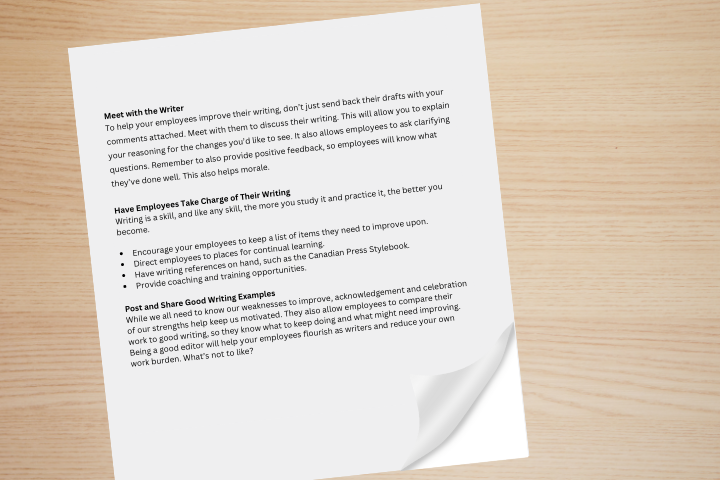
If you are able to understand and share the feelings of other people, you should be able to make an emotional connection in conversation or in writing. Communicating with empathy is crucial for healthy and effective communication, whether it’s with your customers, employees, co-workers or peers.
Empathic communication involves more than just understanding others and anticipating their concerns or perspectives. It allows – and accepts – different perspectives and emotions in a way that is supportive.
So, whether it’s a major shift within your organization or something as seemingly small as switching up the breakroom coffee creamer (hello, Irish cream), creating space for people to give their input and express concern makes for a smoother transition.
Empathy in Verbal Communication
According to the Forbes article When Leading a Change, Start With Empathy, one of the most important ways to communicate with empathy is to make people feel heard. In verbal communication, this means you give people your full attention. You acknowledge and validate their concerns, taking note of cues from what they say and from nonverbal cues like body language. After you say what you need to say, you practice actively listening so that you listen to understand them and not just to respond. You validate their feelings even if you don’t agree with them.
Empathy in Written Communication
The key to writing with empathy is to really understand your audience. It involves choosing your words carefully so that you share the information that matters to your audience with the right tone. When you do this, your written communication will resonate with them. There may still be debate or disagreement with your position, but not an outright backlash.
The Benefits of Communicating With Empathy
When we intentionally try to communicate with empathy in the workplace, many good things happen. These include:
- Creating an inclusive workplace: Healthy work environments occur when people understand each other and learn how to communicate well despite their differences. Conflict can be healthy when the environment allows space for respectful discussions and curiosity.
- Improving performance: When an organization has a company culture that is healthy, they retain top performers. There is typically a high correlation between performance and high scores on empathy. It’s not surprising that feeling a human connection boosts productivity, fuels effective collaboration and builds trust and loyalty.
- Building leadership skills: Leaders who can cultivate a shared vision, inspire loyalty and motivate others through challenges are effective leaders. Being able to communicate with empathy to improve human connections with colleagues and clients is a competitive advantage.
Tips for Communicating with Empathy
Becoming a more empathetic communicator will make people in your organization feel valued and motivated. For both the big transitions and the everyday, these tips will ensure you lead with respect and prioritize making everyone feel included.
- Know and understand who you are communicating with: Focus on who your audience is and put yourself in their shoes. Ask yourself, who are you trying to understand? What are their fears, frustrations and anxieties? What matters to them about your message? What will concern, upset or alarm them? Is there information you could share to alleviate their possible negative reactions?
- Communicate information or respond in a timely manner: The timing of communication matters. Making sure you share information with those directly affected before they hear it from other sources builds trust. If you respond to concerns quickly and with empathy, it seems you genuinely care. It’s okay if you don’t have all the answers right away; provide regular updates and keep people informed. “This is what we know right now and we’re working on getting more answers” is better than silence.
- Choose your words carefully: Words matter. Speak plainly and use accessible language, particularly when you need to communicate sensitive information. Avoid catchphrases, which can seem glib or even insincere. For example, saying, “I understand your concerns” is not as empathetic as, “I can see where you’re coming from and how very frustrating [their emotion expressed back to them] the changes to employee benefit plans [validating their experience] are for you when you rely on extended health coverage for your daughter. We will work with you to figure out what the changes mean for you.” Be especially careful in written communication because it is very easy for your tone to be misunderstood.
- Be a good listener: Communication flows two ways. Be curious if someone expresses a concern, not dismissive. Asking questions lets them know you care about what they have to say. First, repeat what they said to confirm you understand them and then follow up with a question to dig deeper into the conversation. You don’t have to agree with their concerns or change your position, but hearing what they say and taking it into consideration makes people feel they matter.
- Remember to pause or invite people to respond: Don’t try to finish someone’s sentence or fill the space with your words. Silence is an opportunity for people to collect their thoughts. Allowing time for people to think before they reply shows them that you’re a respectful listener. Waiting a minute or two sometimes gives people the space to offer up something they wouldn’t have shared otherwise. If you’re writing, invite people to share their feedback with you and then let them know you’ve read what they shared.








